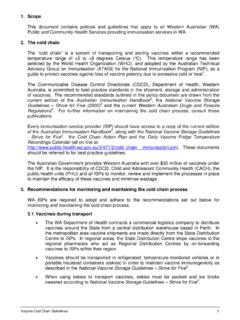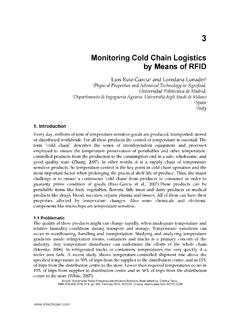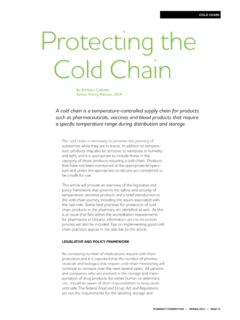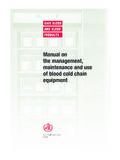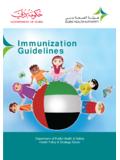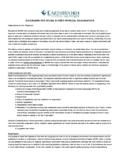Transcription of MEDICINES CONTROL COUNCIL - SPX Logistix
1 SA Guide to GWP 4 02 SA Guide to GWP v2 Mar12 for March 2011 Page 1 of 47 MEDICINES CONTROL COUNCIL GOOD WHOLESALING PRACTICE FOR WHOLESALERS, DISTRIBUTORS and BONDED WAREHOUSES This document has been prepared to serve as a recommendation to applicants wishing to conduct business as medicine wholesalers, distributors and those who wish to operate bonded warehouses. I t represents the MEDICINES CONTROL COUNCIL s current thinking on the safety, quality and efficacy of MEDICINES . It is not intended as an exclusive approach. Version 1 - Implementation 6 June 2003 Version 2 Updated to amend various sections Due date for comment Version 2 30 March 2012 Version 2 Implementation July 2012 REGISTRAR OF MEDICINES MS M HELA SA Guide to GWP 4 02 SA Guide to GWP v2 Mar12 for March 2012 Page 2 of 47 Back to ToC TABLE OF CONTENTS Page 1 Introduction 4 2 Scope of document 4 3 Definitions 4 4 Guiding Principles 10 5 Relevant Legislation 11 6 Contractual Activities, Service Level Agreements and Technical Agreements 13 7 Customer Verification 14 8 Vendor Verification 15 9 Organisation and Management 15 10 Personnel 16 General 16 Responsible Pharmacist 17 Pharmacy Support Personnel 19 Pharmacist s Assistant (basic) 19 Pharmacist s Assistant (learner basic) 19 Pharmacist s Assistant (post-basic)
2 20 Pharmacy Student 20 Pharmacist 20 Training 20 11 Quality Management System 21 General 21 Self-Inspections 21 Corrective and Preventive Action (CAPA) 22 Corrective Action 22 Preventive Action 22 Validation 23 Calibration 23 Electronic records 23 Risk Management 24 Change CONTROL 26 12 Documentation and Record Keeping 26 Standard Operating Procedures 27 Documentation System 28 Site Master File 29 Legal Records 29 Sales Records 29 Specified Schedule 5 and Schedule 6 products, Sales and Registers 30 SA Guide to GWP 4 02 SA Guide to GWP v2 Mar12 for March 2012 Page 3 of 47 Back to ToC TABLE OF CONTENTS Page Post-Importation Testing of specified Schedule 5 and/ or Schedule 6 Products, Medical Devices and IVD s 31 13 Procurement for Wholesalers 31 14 Premises.
3 Warehousing and Storage 31 Receipt of Stock 32 General Storage Areas 33 Ambient Storage Conditions for Phamraceutical Products 35 Monitoring of Storage Conditions 35 Storage Conditions for Thermolabile Products 35 Inventory Management 36 15 Shipment Containers and Container Labelling 37 Validated Lagged Container 37 Lagged Container Consumables 37 16 Equipment 38 16 Vehicles 38 18 Sale and Dispatch of Pharmaceutical Products 39 19 Transportation and Products in Transit 40 20 Repackaging and Relabeling 41 21 Complaints 42 22 Recall or Withdrawal of Pharmaceutical Products 42 23 Returned and Rejected Products 43 24 Disposal of Products 45 25 Counterfeit Pharmaceutical Products 46 26 Export 46 27 Importation 46 28 Contact details 46 28 References 47 SA Guide to GWP 4 02 SA Guide to GWP v2 Mar12 for March 2012 Page 4 of 47 Back to ToC 1 Introduction Wholesaler distribution forms part of the supply chain of pharmaceutical products manufactured.
4 Wholesalers/ Distributors are responsible for the effective, efficient and safe handling, storage and distribution of such products ensuring the quality and identity of these during all aspects of the wholesaling and distribution process. This Guideline sets out appropriate steps for meeting this responsibility. Further does this code also apply to the storage of medicine in a Bonded Warehouse. Pharmaceutical products that contain scheduled substances and are not registered with the MEDICINES CONTROL COUNCIL ; and are transmitted through the Republic shall, while in the Republic, be stored in a bonded warehouse which is registered with the relevant Authorities. Except for a brief mention under "storage", the Guideline does not deal with either common or statute law requirements such as the obligations of contractors, Occupational Health and Safety, Customs and Excise, Narcotics, Dangerous Goods, or the many legal requirements surrounding building construction.
5 These must be understood by and met by the wholesaler / distributor. 2 Scope of the Document This document lays down guidelines for the distribution of pharmaceutical products and applies equally to products for human and for veterinary use. In this Guideline, the word "should" indicates requirements that are expected to apply unless shown to be inapplicable or replaced by an alternative demonstrated to provide at least an equivalent level of quality assurance. 3 Definitions The definitions provided below apply to words and phrases used in these guidelines. Applicants should also consider the definitions as prescribed by the MEDICINES and Related Substances Act, 1965 as amended, the Foodstuffs, Cosmetics and Disinfectants Act, 1972 (Act 54 of 1972) and the Pharmacy Act, 1974 (Act 53 of 1974).
6 Auditing means an independent and objective activity designed to add value and improve an organization s operations by helping an organization to accomplish its objectives by using a systematic, disciplined approach to evaluate and improve the effectiveness of risk management, CONTROL and governance processes; and audit and inspection have corresponding meanings; calibration means the set of operations which establish, under specified conditions, the relationship between values indicated by an instrument or system for measuring, recording, and controlling, or the values represented by a material measure, and the corresponding known values of a reference standard. Limits for acceptance of the results of measuring should be established. Including the maximum permissible error or uncertainty of measurement; change CONTROL means a formal system by which qualified representatives of appropriate disciplines review proposed or actual changes that might affect a validated status.
7 The intent is to determine the need for action that would ensure that the system is maintained in a validated state; and that all affected players and processes are prepared to accommodate the change; SA Guide to GWP 4 02 SA Guide to GWP v2 Mar12 for March 2012 Page 5 of 47 Back to ToC cold chain means all of the materials, equipment, processes and procedures used to maintain all products (which require cold chain conditions) within the required temperature range of 2 C to 8 C from the time of manufacture until the products are administered to individuals; cold chain incident means the exposure of a products (which require cold chain conditions) to a temperature outside the required temperature range of 2 C to 8 C for any period of time and the potency of the product is potentially compromised.
8 The product temperature excursion tolerance and permissible time excursion is determined by each product manufacturer for each such product; cold - chain product means all products which require constant storage between 2 C and not exceeding 8 C. This also includes vaccines and other products that require storage at product specific temperatures. thermolabile products has a corresponding meaning; computerised system means a system including the input of data, electronic processing and the output of information to be used either for reporting or automatic CONTROL ; computer validation means documented evidence which provides a high degree of assurance that a computerized system records data correctly and that data processing complies with predetermined specifications; consignment means the quantity of pharmaceutical products supplied at one time in response to a particular request or order.
9 A consignment may comprise one or more packages or containers and may include pharmaceutical products belonging to more than one batch; container means the material employed in the packaging of a pharmaceutical product. Containers include primary, secondary and transportation containers. Containers are referred to as primary if they are intended to be in direct contact with the product. Secondary containers are not intended to be in direct contact with the product; (containers could also be referred to as packaging) contamination means the undesired introduction of impurities of a chemical or microbiological nature, or of foreign matter, into or onto starting material or onto, products, medical devices or IVDs during handling, production, sampling, packaging or repackaging, storage or transportation; contract means business agreement for the supply of goods or performance of work for a specified or agreed time at a specified or agreed price.
10 Contractor means a company or person under contract: a company or person with a formal contract to do a specific job, supplying labour and materials and providing and overseeing staff if needed; corrective action means any action taken when the results of monitoring at the critical CONTROL point indicates a loss of CONTROL ; and the action taken in response to audit findings; SA Guide to GWP 4 02 SA Guide to GWP v2 Mar12 for March 2012 Page 6 of 47 Back to ToC courier company means a company employed to deliver messages, small packages and mail; critical CONTROL point means a step at which CONTROL can be applied and is essential to prevent or eliminate a pharmaceutical quality hazard or reduce it to an acceptable level; cross contamination means the contamination of a starting material, intermediate product or finished product with another starting material or product during production, storage and transportation; cycle counting means an inventory accuracy audit technique whereby inventory is counted on a cyclic schedule rather than once a year.
